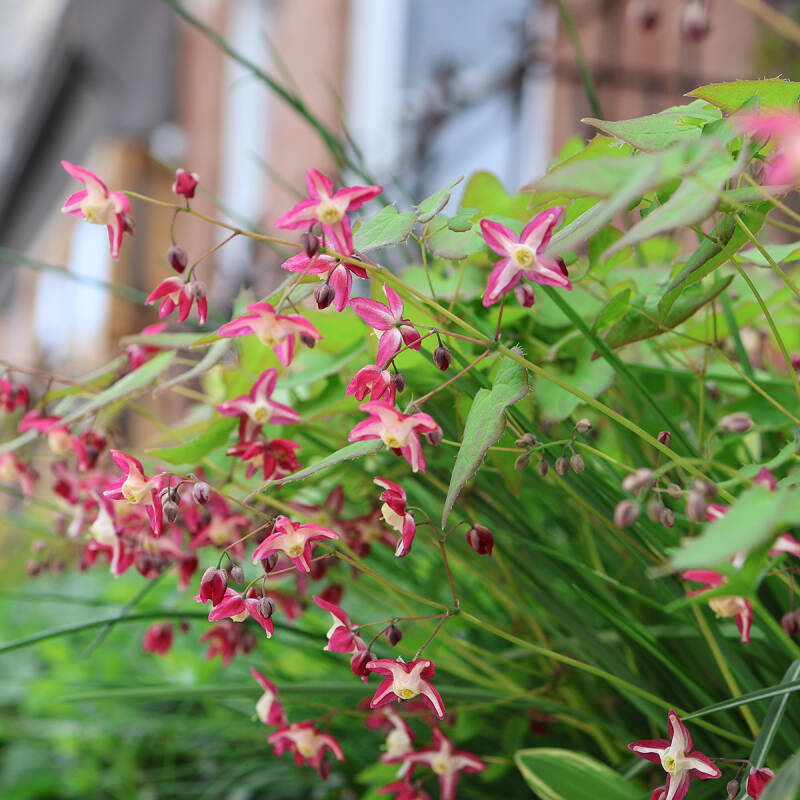Triangle ficus, Ficus triangularis
I have to admit: when I hear the word “ficus” I scowl a bit, thinking of how fussy these plants can be, how they routinely shed unexplainably yellow leaves. But one day when I was walking through my local nursery, an indoor plant caught my eye because of its unique triangular leaves. And yup, you guessed it, it was a member of the ficus family.
I was so enamored with its looks that I bought one. Clearly I was choosing aesthetics and form over function. But (luckily) as it turns out, triangle ficus is easy to care for—it’s not a prima donna ficus—and different from its troublemaking cousins.
To learn more about triangle ficus, please keep reading:

Native to South Africa, triangle ficus shows off pleasing triangular-shaped, bright green leaves and in optimal conditions can grow to an impressive 8 feet tall and 4 feet wide. This plant appears to be quite uncommon in the nursery trade, so if you stumble upon one, consider snatching it up to be added to your indoor plant posse. If, however, you live in USDA zones 12 and 13, you could grow this plant outdoors but it needs warm temperatures to thrive. More commonly, this plant is grown as an indoor plant, and once you get to know your new foliage friend and you have successfully set it up for success, avoid moving it about your house as this plant, like its ficus cousins, does not appreciate relocating.
If your ficus happens to start exhibiting fussy yellow dropping leaves, then perhaps you are killing it with kindness. The secret to these plants is to give them a thorough soaking—so much that water exits the bottom drain—and then let the plant dry out to about half the container size and then you give it another full drink.
An even harder to find variegated variety, Ficus triangularis ‘Variegata’ which sports green and cream triangle shaped leaves on stiff stems. This beauty grows slowly to 4 feet tall and desperately needs bright light to maintain its variegation; otherwise it reverts to all green.
Cheat Sheet

- Try growing triangle ficus as a unique bonsai specimen.
- It’s interesting enough to flank a doorway or entry.
- Remove any dead leaves or stems and trim to shape, or alter the size by cutting above a leaf node.
- The leaves contain a sap that can be toxic to humans and pets if ingested so keep your plant away from your curious ones.
Keep It Alive

- Plant in regular potting soil in a pot that has a sufficient drain hole.
- Although this variety is tougher than other members of the ficus family, this plant still appreciates a good supply of bright light and protection from cold drafts like those from windows or doors and air conditioners. Triangle ficus also detests the drying warmth from heater vents.
- When it comes to bugs and diseases, the most common pests are mealybugs and aphids. Avoid these invaders by keeping your plant clean and dry. Try misting, then wiping the leaves clean once a week and inspect the top and bottom of the leaves to make sure bugs aren’t lurking.
- Every four weeks, except for the non-growing wintertime, feed your ficus with some standard liquid indoor plant fertilizer diluted to half the recommended strength.
For stories on its more popular cousin, Ficus lyrata (fiddle leaf fig), see:
- Lessons Learned: The Two Fatal Mistakes I Made with My Fiddle Leaf Fig Tree
- 10 Things Nobody Tells You About Fiddle-Leaf Fig Trees
Read about Ficus carica (common fig tree) here:












Have a Question or Comment About This Post?
Join the conversation (0)